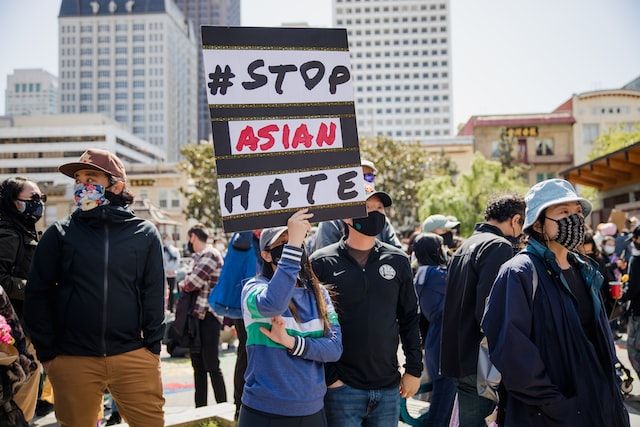Report: Hate Crimes Increased in Several Major US Cities in 2022

9WASHINGTON — From New York to Los Angeles, hate crimes continued to rise in major American cities last year, with preliminary police data showing that at least six metropolitan areas recorded levels not seen since the 1990s.
That’s according to a new report by the Center for the Study of Hate and Extremism at California State University-San Bernardino.
The unpublished report, based on data from 20 police departments, was exclusively shared with Voice of America and comes months before the FBI is due to release its annual hate crime report for 2022.
Brian Levin, director of the research center, said while national hate crime trends generally mirror those of big cities, his data show a more modest uptick of 1.2% for the 20 cities surveyed.
“If current data hold, the FBI report is likely to be up when compared to the incomplete report for 2021,” Levin said.
Last month, the FBI released its annual hate crimes statistics, which showed there were 7,262 hate crime incidents in 2021; however, the report excluded data for New York City, Chicago and most of California.
Of the 20 cities surveyed by the research center, six posted multidecade highs in hate crimes.
Up 18% in New York City
In New York City, the nation’s largest city with about 9 million residents, police investigated 619 hate crimes, up 18% for the year and the most since 1992.
In Los Angeles, the second most populous U.S. city, police recorded a total of 643 hate crime victims in 2022, up 13% from 2021 and the highest number since 2001. In contrast to most other police agencies, the Los Angeles Police Department counts hate crimes by the number of victims rather than incidents.
Other major cities that saw multidecade highs in reported hate crimes include Chicago, Illinois; Houston, Texas; Philadelphia, Pennsylvania; and Austin, Texas.
Levin said improved hate crime reporting was partly responsible for last year’s spike in reported incidents.
“There was a real scramble by not only law enforcement but by many NGOs [nongovernmental organizations] and advocacy groups to get victims’ experiences reported,” he said.
Many definitions of hate
The FBI defines a hate crime as a criminal offense “motivated, in whole or in part, by the offender’s bias(es) against a race, religion, disability, sexual orientation, ethnicity, gender or gender identity.”
The bureau has been collecting and publishing annual hate crime statistics submitted by police departments since 1991.
In the decades since, most hate crimes have been motivated by racial bias, with African Americans the top target. That remained the case last year in most cities studied by the research center. Among the most horrific anti-Black hate crimes last year: An 18-year-old white supremacist gunman shot and killed 10 Black people at a supermarket in Buffalo, New York, in May.
Elsewhere, a wave of antisemitic attacks remained unabated. In New York City, home to the largest Jewish population in the U.S., nearly half of all reported hate crimes involved Jewish victims, with the total number of antisemitic criminal incidents jumping 31% to a record high of 271.
“It’s very shocking but perhaps not surprising for those who deal with this every day,” said Scott Richman, the New York and New Jersey director for the Anti-Defamation League, commonly known as the ADL. “I can tell you that we literally respond … to antisemitic incidents every single day in this region.”
The ADL tracks both hate crimes and hate incidents, which do not rise to the level of a crime.
“There are many things that happen that are antisemitic and very troubling that don’t rise to the level of a crime that we deal with,” said Richman.
Decline in anti-Asian hate crimes
Anti-Asian hate crime, which rose sharply during the pandemic because of the perceived association of the COVID-19 virus with China, was the only category to see a decline in most cities. In New York, anti-Asian hate crime fell from 133 to 86 incidents; in Los Angeles, from 42 to 32.
Despite the decline, Levin said, anti-Asian hate crimes remain at “disturbingly elevated levels when compared to pre-pandemic [levels].”
